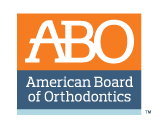January 1st, 2025
It’s no secret that New Year’s Eve is one of the most widely celebrated holidays in the world. Dr. Joseph Gregg and our team love it too. It’s a fresh start, another year of surviving the crazy world we live in, a time to refocus on the things we want for ourselves, a celebration with…
Continue Reading
December 25th, 2024
How You Can Start Preparing Now When you first start thinking about going to the orthodontist, it is normal to feel apprehensive. What will your orthodontic experience bring? Whether you have been advised by a dentist or chosen to seek out orthodontic care from Dr. Joseph Gregg on your own, there are a few things…
Continue Reading
December 18th, 2024
Halitosis is the fancy, scientific word for “bad breath.” Dr. Joseph Gregg and our team know there are several reasons why you may have halitosis; let’s look at a few: Gum disease (also known as periodontal disease) – There are five main types of gum disease, and each one can range from mild to severe.…
Continue Reading
December 11th, 2024
If your child has just gotten braces, chances are it’s a good time to brush up on dental hygiene! Why now? What’s different? And how can you help? Let’s take a few minutes and explore these timely questions. Brushing and Flossing Are Especially Important with Braces There’s no getting around it, it’s harder to clean…
Continue Reading





